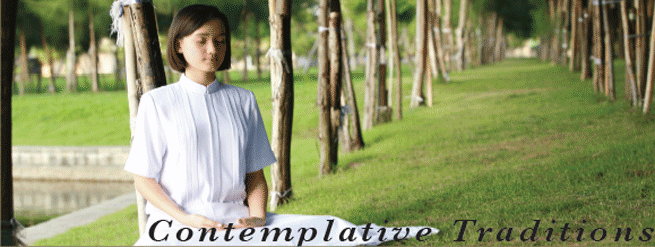
Contemplative Traditions
We Thank You.
Do not travel to other dusty lands, forsaking your own sitting place; if you cannot find the truth where you are now, you will never find it.
Dogen
Science is organized knowledge. Wisdom is organized life.
Immanuel Kant
Like all oceans have the taste of salt, all the [teachings] have one taste: the taste
of liberation.
Tsoknyi Rinpoche
What is happening in us when we pray? Meditate? Engage in contemplative practices? What do such practices do to the human mind-body?
Are transcendental factors beyond the material realm – call them God, spirit, mystical planes, the infinite – involved with these practices? -with the experiences they frame and form? If so, how?
And how can we make those practices as effective as possible? And adapt them to the specific needs and personalities and circumstances of individual practitioners?
People have been asking questions such as these for the past 5000 years of recorded history – which suggests that human beings have searched for their answers throughout our time on this planet. They get to the heart of what it is to be alive, whether considered in your living room today or around a campfire fifty thousand years ago.
Over the centuries, a true science of mind has also been developing, based on the discoveries of psychology and neurology. In the last few decades, new scanning technologies such as EEGs and functional MRIs have led to real breakthroughs in our understanding of the connections between mind and brain – including links between focused attention and brainwaves, and between prayer or meditation and the activation of specific regions of the brain.
These scientific developments bring historically unprecedented opportunities to clarify what may be the material components of contemplative practice (distinct from any Transcendental elements, which are by definition beyond science). Similarly, the refined subjective study of the mind in the contemplative traditions offers an illuminating roadmap for scientific inquiry.
This dialogue enriches both science and spirituality, and it holds the promise of contributing to the deepening understanding of human fear and anger – and cooperation and love – that is so needed for greater peace and ease of living in the 21st century.
Each of the world’s six major spiritual traditions – Buddhist, Christian, Jewish, Muslim, Hindu, and Shamanic – has grappled with the questions at the top of this page, each in its own way. Nonetheless, there are many fascinating and important similarities among these – for, if there is only one God, there is also only one brain (in the fundamental template of our DNA) – which can be used to deepen your practice in your “home” tradition.
So far we have developed materials and inquiries for the first two of these – Buddhist, Christian, and Jewish – and we invite contributions for the other traditions.
Our focus is on actual contemplative practices, although some discussion of the beliefs and cultural aspects of each tradition will also occur. You will see articles, arguments (hopefully respectful), links to internet resources, meditations and prayers, reviews, poetry, and even the occasional scientific study. This information is offered freely, though we always appreciate appropriate attribution of authorship.
We are interested in a thoughtful, friendly, and spirited (!) exploration of the intersection of contemplative practice and science. We invite you to send us your own reflections and suggested resources, and we will publish whatever we can.
We truly wish you the very best in your own spiritual journey. May you and all beings be safe, healthy, and happy, and live with ease!

